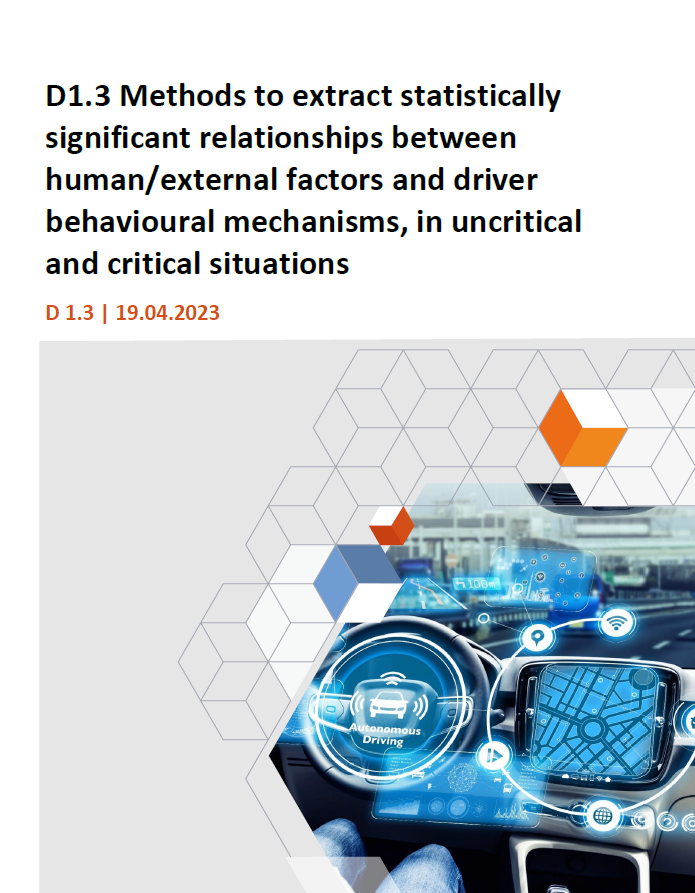The major scientific challenge of the i4Driving Project is developing a human driver model that captures the relevant behavioural mechanisms for safety assessment. The project has a specific goal to identify causal relationships among external, human factors and safety-critical driver behaviours at the level of specific driving situations.
The key question is how factors like “gender, cultural and ethnic background, ageing, impairments, driving experience and route familiarity, mental workload or fatigue, weather and lighting conditions” are statistically correlated with safety-critical driving behaviours. This deliverable defines the data mining framework to:
- Explain the cognitive/perceptive process of human driving;
- Predict the causes that lead to safety-critical driving behaviours; and
- Explain the causes exogenous to human behaviour that are related to road accidents and the same driving behaviours that are dangerous for safety.
Additionally, it introduces to global sensitivity analysis methods that are used for selecting features, following recent developments on the use of sensitivity analysis of and for data mining (Tunkiel, Sui, and Wiktorski 2020; Antoniadis, Lambert-Lacroix, and Poggi 2021), also including the use of the concept of mean dimension (Hoyt and Owen 2021).
Data Mining and Machine Learning can be useful considered for Driving Behavioural Analysis. The input is to consider external factors, human factors and safety-critical driver behaviours. The output is to identify a set of causal relationships, observable features in the data. Data mining methods aim to detect discriminant key human factors and safety-critical driver behaviours under specific driving conditions. Machine Learning Modelling can be applied to identify significant causal relationships between external and human factors, and safety-critical driver behaviours.
The formulation and structuring of hypotheses is the basis in the machine learning modelling, as well as in the experimental design. Selecting a comprehensive set of use cases and scenarios requires both Data Scientists and Domain Experts.
Statistical Learning and Data Analysis using Data Mining methods have been performed in a case study. The databases on mobility deriving from the Strategic Research Program (SHRP2) on Naturalistic Driving Study collected by University of Virginia have been considered (https://insight.shrp2nds.us). The aim is to address the driver performance and behaviour in traffic safety.

